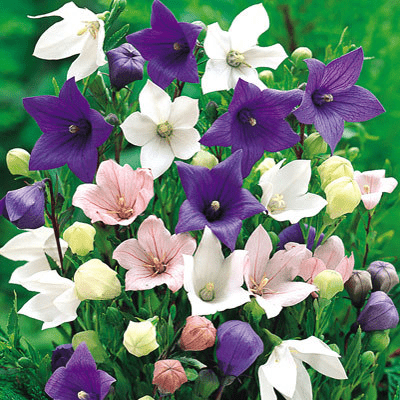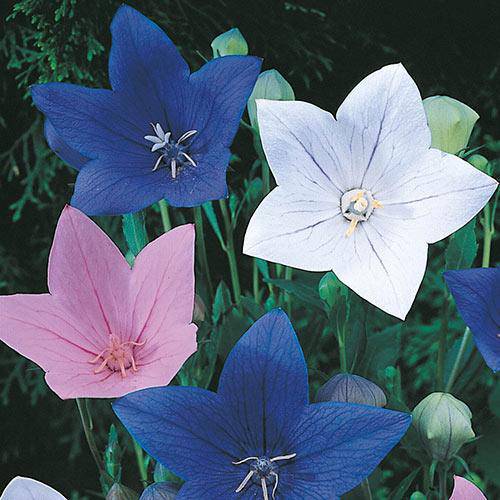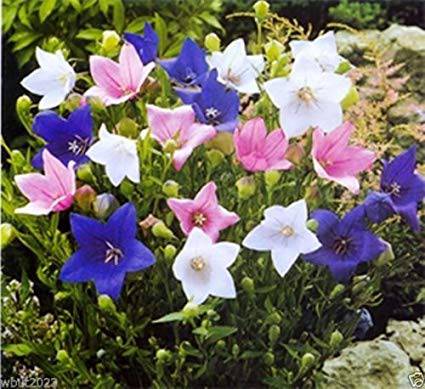How to Grow
Balloon flowers prefer full sun, but will tolerate afternoon shade. They like well-drained, acidic soil and are hardy to zones 4-9. Seeds can be directly sown as soon as the soil is workable in the spring. Balloon flowers will tolerate dry conditions once they are established, but they preferred to be well watered. They will grow to 1-2 feet high and about a foot wide. Plant in border or rock gardens for color and interest from spring to fall. This is a particularly fun plant for kids:flower buds swell up like balloons and will pop when squeezed.
Uses
Although they are pretty, the balloon flower's hidden value lies in its tuberous roots. For more than 2.000 years, the balloon flower's roots have been used for medical and culinary purposes in Asia. In Korea, the root is called Doragi. It is considered to offer similar medicinal benefits as ginseng, but at a lower cost. It's used in several South Korean side dishes such as doraji-muchim and Doraji namul; both are common vegetable dishes found in Korean homes and restaurants. You can find dried balloon roots in Asian grocery stores for consumption.
The use of Doraji or balloon flower roots has a long history in Korea. In fact, Doraji is the name of a popular folk song in Korea. Almost every school age child knows the song that is simply about a beautiful wildflower that grows on the slopes of the mountains in Korea. Its medicinal uses have been purported to include the elimination of phlegm, relieving cough and reducing inflammation. The root is brewed as a tea with jujubes (red dates) to help counterbalance the bitterness of the root.
Harvesting
To gain the full benefits of the root, it is best to harvest it in the fall in it's second or third year. Once harvested, scrape off the outer, fibrous skin, then soak for a few hours. Then, slice or dry whole in the sun. Once dried, store the root in an airtight container; it will keep for a long time as long as it remains dry. Use the root in stir fries or brew in water for tea. Add some of the sliced, dried root to your chicken noodle soup for extra cold fighting power.

![[Seeds] - Caribbeangardenseed](http://caribbeangardenseed.com/cdn/shop/files/gift-card-gift-card-1_1024x1024_dfa857db-9150-4315-a362-7f0bb3fb9c47_60x28.png?v=1703978838)




